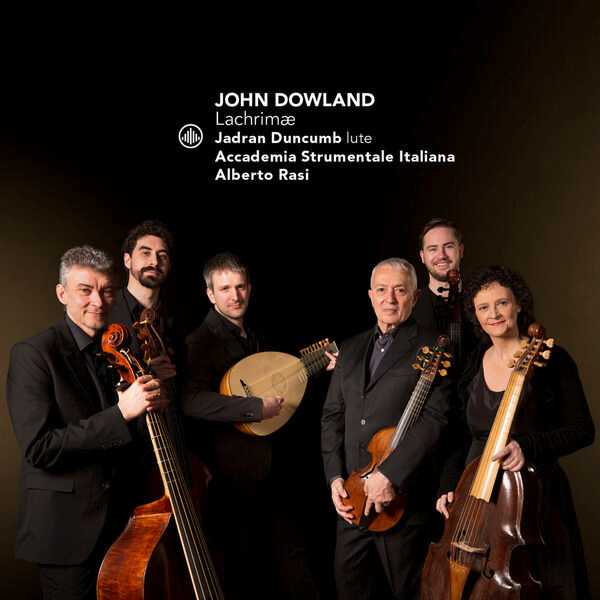
Composer: John Dowland
Performer: Jadran Duncumb
Orchestra: Accademia Strumentale Italiana
Conductor: Alberto Rasi
Format: FLAC (tracks)
Label: Challenge Classics
Catalogue: CC72938
Release: 2023
Size: 333 MB
Recovery: +3%
Scan: cover
01. Lachrimae Antiquae
02. Sir John Souch his Galiard
03. Lachrimae Antiquae Novae
04. The King of Denmarks Galiard
05. Lachrimae Gementes
06. The Earle of Essex Galiard
07. Lachrimae Tristes
08. M. Giles Hoby his Galiard
09. Lachrimae Coactae
10. M. Thomas Collier his Galiard
11. Lachrimae Amantis
12. M. Nicho. Gryffith his Galiard
13. Lachrimae Verae
14. Captaine Digorie Piper his Galiard
15. Semper Dowland semper Dolens
16. M. George Whitehead his Almand
17. Sir Henry Vmptons Funerall
18. M. Henry Noell his Galiard
19. M. Iohn Langtons Pauan
20. M. Bucton his Galiard
21. Mrs. Nichols Almand
Alberto Rasi and his prestigious Accademia Strumentale continue their journey through the masterpieces of the European Baroque music with this of works by John Dowland.
After Bach’s Kunst der Fuge (CC 72842) and Rameau’s Pieces de clavecin en concert (CC 72905), here they join forces with the young star of the lute, Jadran Duncumb, to confront another Baroque milestone: John Dowland’s Lachrymae. For the first time, the players are recorded around a table where the printed music lies.
From 1598 to 1606, Dowland entered the service of Christian IV of Denmark as court Lutenist. Having had the opportunity to absent himself by traveling to England both for the musical needs of the court and on his own business, he was in London from the summer of 1603 until the summer of 1604, and during that stay he published Lachrimae, or Seaven Teares (1604), a collection he dedicated to Anne of Denmark, Christian IV’s sister, wife since 1589 of the new King James I.
Lachrimae is Dowland’s only publication of consort music, and the only collection for a string consort and lute. It is scored in five parts for a consort of viols (or violin-family instruments) and one part for lute in tablature. All parts are not printed in separate scores, as was customary, but on a single folio: all six performers could read their part from two facing pages by sitting around the table with the book placed in the middle. That ‘book-singing’ is par excellence that of polyphony says a lot about the decisive function that also in terms of performance takes on the graphic arrangement of the music on the charts containing it.
The most unique of the graphic solutions devised for polyphonic music is the ‘table’ layout adopted by John Dowland for the publication of Lachrimae or Seaven Teares. The six parts of the music are printed on two adjacent large-format (folio) sides and arranged in such a way that, with the open book in the middle of a table and the musicians distributed on its sides, each has his or her part facing the right way. The ideal performance condition, where possible, remains today that with the ‘book’ of music open on a table and the performers arranged around it in the positions envisaged by the author, so as to faithfully recreate the original sound conditions of this music, for a listening experience that brings together the visual and auditory aspects of the concert in a single, more intense perceptive sensation.